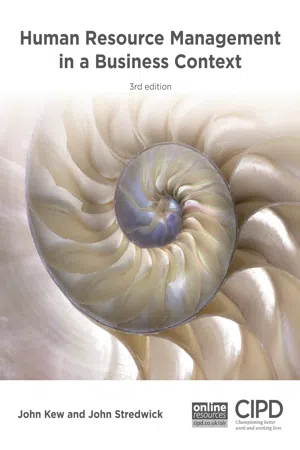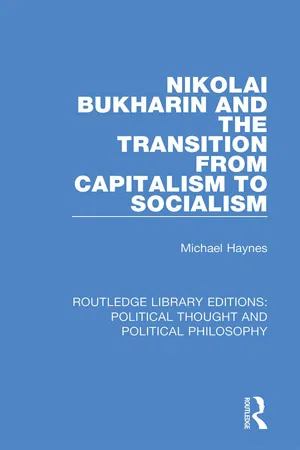Economics
World Economies
World economies refer to the interconnected systems of production, distribution, and consumption of goods and services across the globe. These economies are influenced by factors such as trade, investment, technology, and government policies. They can be categorized as developed, emerging, or developing, and their performance has significant impacts on global markets and international relations.
Written by Perlego with AI-assistance
Related key terms
4 Key excerpts on "World Economies"
- eBook - ePub
- W. Charles Sawyer, Richard L. Sprinkle(Authors)
- 2020(Publication Date)
- Routledge(Publisher)
However, over the last several decades, this interdependence truly has become a two-way street. In the U.S. and the rest of the world, goods, services, capital, technology, and people flow across borders with greater frequency and in increasingly greater volumes. Between 1975 and 2019, global trade in goods has increased by almost 600 percent. For some individuals and businesses, international transactions and international relationships have become more important than interactions within their own country. National policies that affect trade, investment, the value of the country’s currency, and the level of national output can be used to enhance these benefits and lessen the costs of interdependence. To reap these additional benefits, each country needs to base its national policies on an objective analysis of international economics.The purpose of international economics is to explain these patterns of international trade, investment, and other cross-border transactions that we currently observe in the real world. Much of our examination of international economics is based on analyzing the economic data of individual countries and the world economy. In this chapter, we describe several different aspects of a country’s interdependence in the world economy. Throughout the rest of the text, we will refer to economic data as it pertains to selected international economic issues. We begin by describing how international economics relates to the concepts you have learned in previous economics courses. From there we will examine the overall landscape of the world economy. We will do this by first looking at the output of the world economy. With this information we can then consider how international transactions such as international trade and capital movements fit into the picture. At that point, some of the more important issues that are discussed later in the book can be introduced. - eBook - ePub
International Development
Socio-Economic Theories, Legacies, and Strategies
- Anna Lanoszka(Author)
- 2018(Publication Date)
- Routledge(Publisher)
3I Conceptualizing the global economy
There is little guidance what ordering principles should be used when studying the magnitude of the global economy. The key navigators come in different shapes and forms: private actors – multinational corporations, small businesses, individual entrepreneurs, private charity organizations; public actors – governments themselves, state-owned companies, regional blocs such as the EU; and finally, international organizations such as the World Bank, the IMF, and the WTO. These diverse actors do not necessary work well together but the idea of the interconnected world is particularly poorly understood in the context of economic development. Developmental policies are designed for and implemented by domestic actors. They impact the local populations in a very direct way. But it would be a mistake to treat such policies in isolation from the global environment. Economic globalization, understood as “the cluster of technological, economic and political processes that drastically reduce the barriers to economic exchange across borders,”1 inevitably shapes options at the local level.The framework for worldwide cooperation organized around a set of economic organizations is often used to explain a remarkable growth of transnational economic transactions in the decades after World War II. It all started with the momentous Bretton Woods agreement, which set the course towards formalized inter-state collaboration on economic matters. In this chapter, we examine the most prominent international organizations to probe how successful they have been in integrating developing countries into the operational architecture of the globalizing economy. Special attention is paid to trade, considered to be the primary force behind deepening economic internationalization. During the era of mercantilist trade, the desire to accumulate precious metals and exotic goods fueled the imperial greed and excused the conquest. In the time of global market integration, open trade has become the essential engine of growth in many parts of the world, driving forward previously poor economies such as China, South Korea, and India. In 2015, developing countries had a 42 percent share in world merchandise trade while the total merchandise exports of all WTO members (over 160 countries) totaled US$16.2 trillion in the same year.2 - eBook - ePub
- John Kew, John Stredwick(Authors)
- 2016(Publication Date)
- CIPD - Kogan Page(Publisher)
CHAPTER 6
The World Economy
LEARNING OUTCOMES
When you have completed this chapter, you should be able to understand, explain and critically evaluate:- major international bodies which impact on the business environment of organisations (IMF, World Bank, WTO)
- the causes and extent of globalisation processes
- multinational and transnational organisations, and their HR systems
- major debates about the significance and desirability of globalisation
- the response of governmental organisation to globalisation processes
- the impact of globalisation on markets for goods and services
- the impact of globalisation on employment and labour markets
- globalisation and the recession
- Geert Hofstede’s cultural dimensions
- management and HR styles in selected members of the G20
- the role and functions of the European Union and its major institutions
- debates about the evolution of the European Union (integration and enlargement)
- the eurozone crisis of 2010 onwards
- Brexit.
6.1 INTRODUCTION
Should Greece leave the euro? Is globalisation good or bad for the developing world? These are the kinds of issues that will be explored in this chapter on the international economy.Since the end of the Second World War, the world economy has become more and more integrated. Partly this has been a deliberate, planned development. The International Monetary Fund, the World Bank and the General Agreement on Tariffs and Trade were set up to regulate the world economy, and to ensure that the world did not suffer from a recurrence of the Great Depression of the 1930s. The European Economic Community, the predecessor of the European Union, was set up partly to ensure that France and Germany could never again go to war with each other. Other developments were only made possible as a result of technological developments in communication and transport which enabled the growth of globalisation. - Michael Haynes(Author)
- 2019(Publication Date)
- Routledge(Publisher)
8 In this sense the world economy was more than just the sum of its parts as was implied in the analysis of Hilferding and Kautsky and explicitly developed in the various analyses of conventional social science. On the contrary, Bukharin argued that the world economy is ‘a really existing’ unit which imposes its own dynamic on its parts so that ‘we may define world economy as a system of production relations and, correspondingly, of exchange relations on a world scale.’ The roots of this world economy lie in the expansive nature of capital itself. The competitive drive of capitals to maintain their rates of profit does not stop at national boundaries — it makes nonsense of them. Capitalism does not ‘spill over’ its national limits, it is by definition international. Thus the world economy does not simply exist at the level of international trade. This is only ‘one of the most primitive forms of expressing production relations’. It also exists at the level of movements of labour and capital, the development of international forms like multinational companies, and so on. At the root of this lies the system of world production relations,the whole process of world economic life reduces itself to the production of surplus value and its distribution among various groups and sub-groups of the bourgeoisie on the basis of an ever-widening reproduction of relations between two classes — the class of the world proletariat, on the one hand, and the world bourgeoisie on the other.9But if the world economy acts upon its parts then so do the parts act decisively to affect the character of the whole. While capitalism may be international, ‘the process of the internationalisation of economic life is by no means identical with the process of the internationalisation of the interests of capital.’ The interests of individual units of capital are determined by their competitive relations with one another. On the one hand, this gives rise to various international forms like international cartels and multinational companies. However, because capitalism is subject to recurring crises of production it also gives rise to intensified competition and problems in the reproduction of capital. As a result, individual capitals will run for cover and group around the national form for protection; that is, the state. There is thus a tendency for capitals to centralise and integrate with the state leading towards what Bukharin termed state capitalism. The world economy is therefore the ‘special medium in which the “national economic organisms” live and grow, which conditions the nature of the economic conflict between them.’10
Learn about this page
Index pages curate the most relevant extracts from our library of academic textbooks. They’ve been created using an in-house natural language model (NLM), each adding context and meaning to key research topics.



